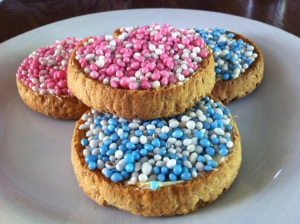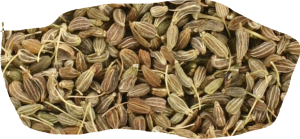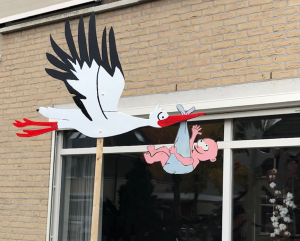In a previous blog post, we discussed the concept of ‘rituals’. At the time it was about the Dutch rituals that have to do with a birthday party. And we found out: a ritual is ‘a procedure in which the actions and wording follow a more or less prescribed form and order’. In this edition, I´d like to tell you a bit about another ritual. To the best of my knowledge, another example of an exclusively Dutch ritual.
The crunchy ‘cakes’ that your colleague was just handing-out are called ‘rusks´ (or ‘biscuit rusks’). And, on closer observation, the colored topping turns out to consist of small grains of a sugary nature. The Dutch call these grains: ‘muisjes’ (pronouciation). That word translates as ‘little mice’. Indeed: if you want to tell a story about the Dutch people to your family and friends that makes people’s ears prick up: the Dutch people eat mice. And they do so on a very particular occasion.

And once every so many year, the country treats itself to rusks with mice that are orange and white. That means that the royal heir who is first in line to the throne has his or her first baby, so: yes, a new generation is added to the monarchy (the House of Orange, hence the color).

There is another ritual over here, surrounding the birth of a new baby. But that ritual is not exclusively Dutch. I heard from friends from different countries that they have something similar. This ritual dates back to the time when ‘sexuality’ and ‘procreation’ were not obvious conversation topics between parents and children. So, by the time children were old enough to start wondering ‘where the babies come from´, one of the ‘answers’ that parents came up with was that the babies were brought to the houses by storks.


